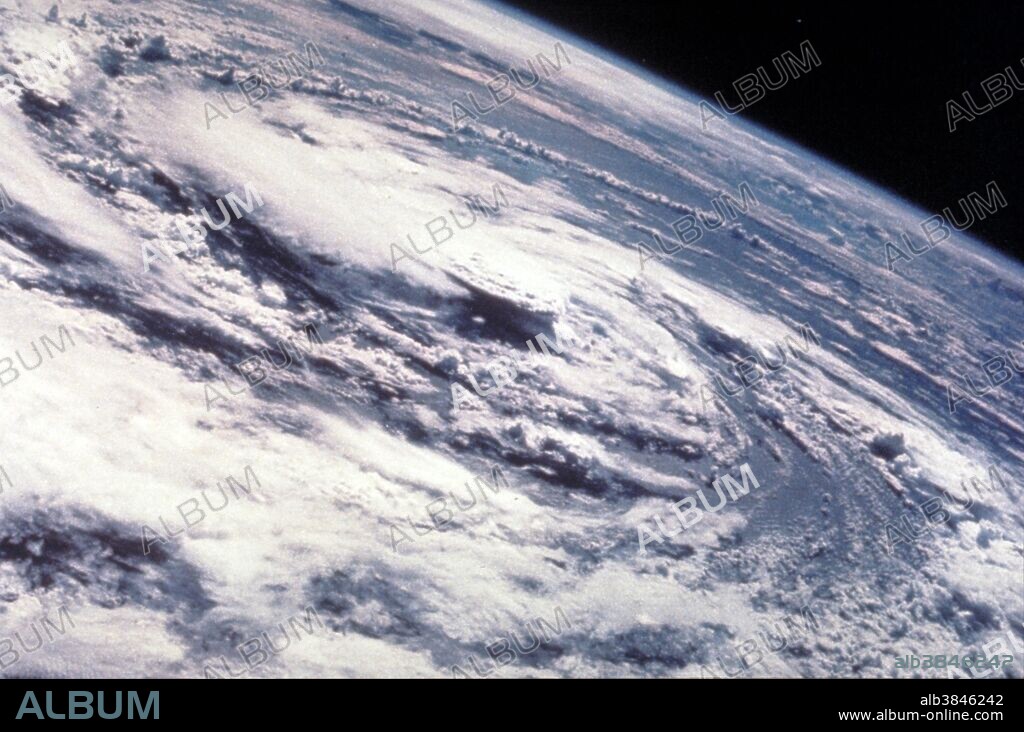alb3846242
Hurricane Gladys, Apollo 7 Image, 1975

|
Ajouter à une autre Lightbox |
|
Ajouter à une autre Lightbox |



Avez-vous déjà un compte? S'identifier
Vous n'avez pas de compte ? S'inscrire
Acheter cette image.
Sélectionnez l'usage:

Titre:
Hurricane Gladys, Apollo 7 Image, 1975
Légende:
Voir la traduction automatique
Hurricane Gladys, Gulf of Mexico, as seen from the Apollo 7 spacecraft during its 91st revolution of the earth. Photographed from an altitude of 99 nautical miles, at ground elapsed time of 144 hours and 27 minutes. Hurricane Gladys was the farthest tropical cyclone from the United States to be observed by radar in the Atlantic basin since Hurricane Carla in 1961. The seventh named storm and fifth hurricane of the 1975 Atlantic hurricane season, Gladys developed from a tropical wave while several hundred miles southwest of Cape Verde on September 22. Initially, the tropical depression failed to strengthened significantly, but due to warm sea surface temperatures and low wind shear, it became Tropical Storm Gladys by September 24. Despite entering a more unfavorable environment several hundred miles east of the northern Leeward Islands, Gladys became a Category 1 hurricane on the Saffir-Simpson hurricane wind scaleon September 28. Shortly thereafter, the storm reentered an area favorable for strengthening. Eventually, a well-defined eye became visible on satellite imagery.
Crédit:
Album / NASA/Science Source
Autorisations:
Modèle: Non - Propriété: Non
Questions sur les droits?
Questions sur les droits?
Taille de l'image:
2967 x 1966 px | 16.7 MB
Taille d'impression:
25.1 x 16.6 cm | 9.9 x 6.6 in (300 dpi)
Mots clés:
APOLLO 7 • CIEL NUAGES • CIEL PLUIE • DEGAT DE TEMPETE • DEGAT • DESTRCUTION • DESTRUCTION • DESTRUCUTION • DETERIORATION • EAU PLUIE • ENDOMMAGEMENT • METEOROLOGIE • NUAGE • NUAGES • OURAGAN • PLUIE
 Pinterest
Pinterest Twitter
Twitter Facebook
Facebook Copier le lien
Copier le lien Email
Email
